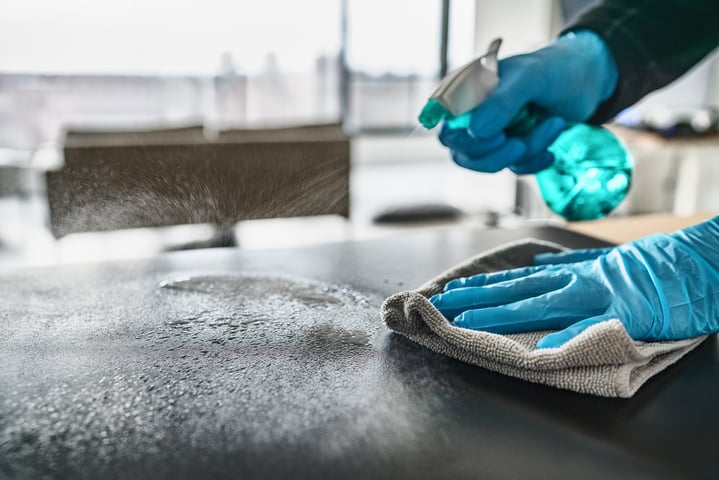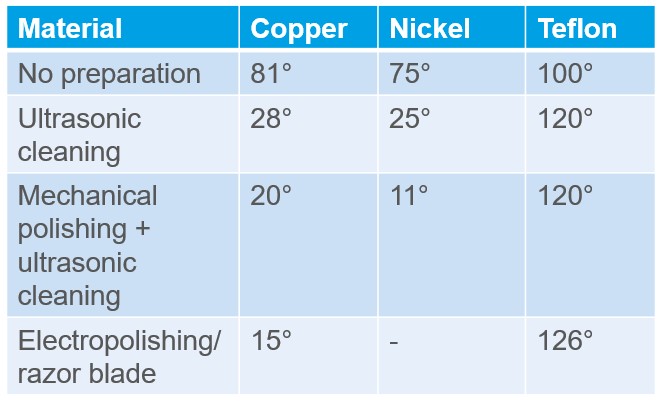
Surface cleanliness is an important topic in many industrial areas. It is especially needed in applications like coating, painting, or printing where something is added on top of the other material. If the surface where the coating is applied is not clean, the adhesion between the coating and the substrate is typically poor. There are many different ways to ensure surface cleanliness in industrial settings, such as intensive washing cycles or plasma cleaning. But how can you be sure that the cleaning process has been effective? Or maybe you are spending too much time to ensure surface cleanliness when less would be enough. Contact angle measurements offer a fast and sensitive way to evaluate the effectiveness of different cleaning processes. It can also be used as a tool for quality control to ensure suitable surface properties.
Clean metal surfaces have high surface free energies which can be seen as low water contact angles. Native metal surfaces have in theory extremely high surface free energy, even over 1000 mN/m, which is due to strong metallic bonds that hold the metal atoms together. However, as the surface energy is so high, in practice, a completely clean metal will immediately react with the molecules in the air and the surface is instantly contaminated. Thus theoretical surface free energy values are never measured in practice but there is still a clear difference between the clean and clearly contaminated surface.
Before adding a coating on metal, it needs to be cleaned to remove grease or other contaminants. In the table below [1], the water contact angle on a copper and nickel surface is measured before any cleaning procedure and immediately after. Most of the contamination is already removed after ultrasonic cleaning in soap solution but the contact angle can be further reduced with additional cleaning steps.

For polymers, using water contact angle measurements is not as straightforward. This is because the water contact angle on a clean polymer surface is often fairly high. If looking at the table above, the water contact angle on a contaminated Teflon is lower than what you would assume for a native Teflon surface (120 ° is a typical value reported). The last cleaning step is plaining with the razor blade which seems to increase the contact angle even higher but that is due to the added roughness rather than increased surface cleanliness.
To evaluate cleanliness on polymer surfaces, measurement of advancing and receding contact angles can be useful. From the data below, it can be especially seen that there is a clear difference in the receding contact angle before and after cleaning in all samples.

If you want to hear more about how contact angle measurements can be used to predict adhesion, please watch the webinar through the link below.
Standard contact angle measurement considers the surface's chemical properties. The influence of surface roughness is added by utilizing the Wenzel equation.
Cohesion and adhesion are fundamental concepts in the study of physics and chemistry, playing crucial roles in various natural and industrial processes.
Surface inspection is done to guarantee optimum surface properties for coating and bonding
A spreading coefficient is a measure of the wetting behavior of a liquid on a solid surface.
Wetting and adhesion analysis has been added to our all-inclusive OneAttension software and is available for download for all OneAttension customers.
Depending on the strength of these forces, the adhesion failure can be either adhesive, cohesive, or substrate failure.
One of the main challenges in PCB manufacturing is the adhesion of the conformal coating. Contact angle measurements can be used to predict adhesion.
Adhesion problems are one of the main reasons for the failure of the product. Read to find out how contact angle measurements can help solve the problem.
